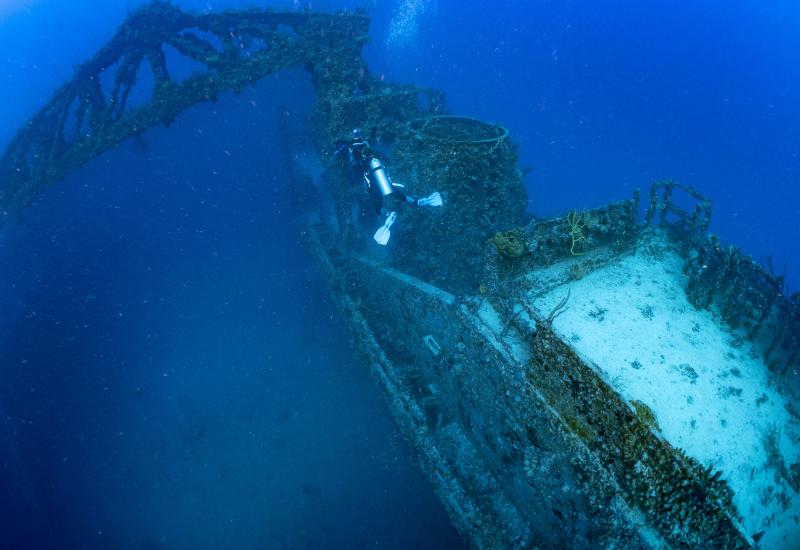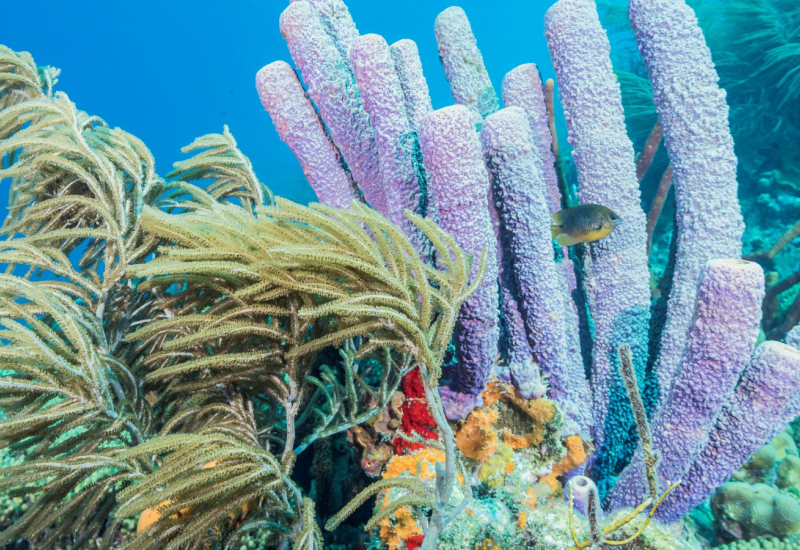Is Solo Diving Right For You?
Solo diving is a not-entirely-accepted way of enjoying our sport. It’s not for everyone, even though many of us have done it at one time or another, trained or not. But for those with nerves of steel who master the necessary lessons, solo diving can free you to set your own course and choose your own adventure, any time, almost anywhere.
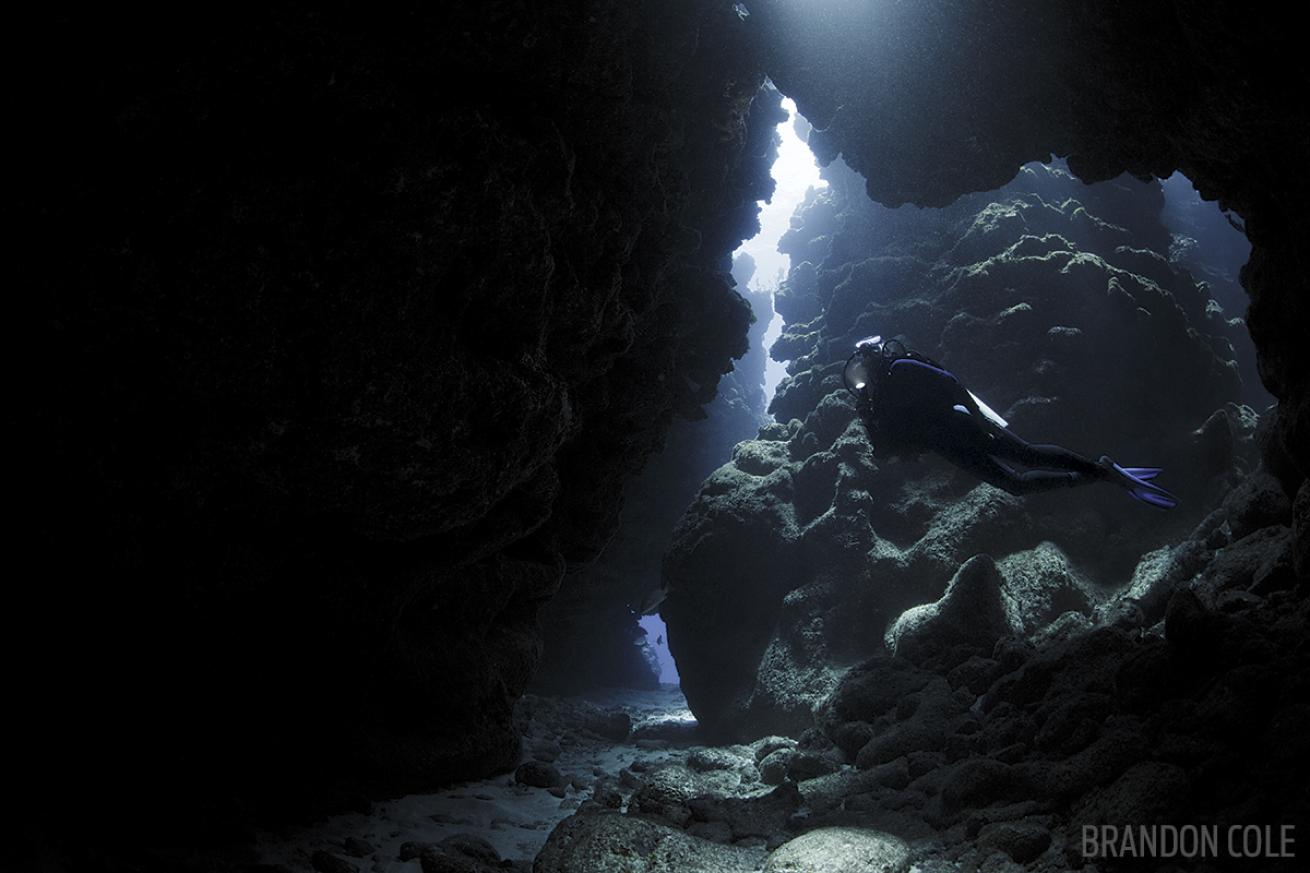
Brandon ColeSelf-reliance is a requirement in solo diving, especially in navigation.
THE FIRST RULE OF SOLO DIVING IS: DON'T TALK ABOUT SOLO DIVING.
Many dive operators retreat behind a sort of unspoken don’t-ask-don’t-tell policy when it comes to diving buddy less. They know experienced divers do it, but they’d rather not acknowledge it. They can’t. They’ve got to cover their backsides, legally. And not without reason. Many divers don’t know the difference between solo diving and diving by yourself. “Solo diving means you thought about it and got certified. Diving by yourself just means you don’t have a buddy,” says Bart Linders, an instructor on Bonaire who’s seen equal numbers of both. The conversation changes — namely, there becomes one — once divers produce a card, such as that of the SDI solo diver program or PADI’s self-reliant diver, proving that they’re trained to safely practice this variation of the sport. Then, a world of possibility opens up.
Ask any photographer, and he’ll tell you solo diving is an inevitability. “I’m not the best buddy,” says Christian Skauge, an underwater photographer and the editor of the Norwegian dive magazine Dykking. “When I find something interesting, I can spend the whole dive on it — and the average dive buddy will be bored to death in the meantime.”
Which makes sense. Especially when a shooter is fixated on a macro subject. His camera rig blocks a partner’s view. A buddy couldn’t engage even if she did share a passion for, say, frogfish yawns or the dietary habits of nudibranchs.
“Even if you have the best buddy in the world, you can feel them hovering,” Skauge says.
And because of this, “I find it much easier diving alone, when I don’t have to worry about anything other than getting good pictures. I get my best photos when I am alone.”
Wakatobi Dive Resort in southeast Sulawesi, Indonesia — a breeding ground for macro wonders — knows this. Given that the majority of clients are shooters, the resort openly allows solo diving, provided divers show proper certification.
Their staff is especially accommodating. Solo divers are allowed on boat dives. Wakatobi’s dive guides also provide especially thorough briefings on the house reef, with special note given to navigational tips and aids. The resort’s fleet of water taxis will drop divers at either end of the house reef, allowing guests to make their way back to the dive shop on their own clock.
And if a diver doesn’t return when stated, the dive staff knows. A sign-in system tracks guests who are out diving. Plus, attentive staffers eagle-eye the water, just as lifeguards do. Moreover, the resort keeps a large supply of spare tanks, in sizes 13 to 30 feet, available.
The Frederiksted Pier on the west side of St. Croix couldn’t be more ideal for solo diving: You can park yards from the put-in, and the site depth averages 20 feet. And the fact that fishermen hang out there means you’re never far from support.
The rest of the island’s shore dives — from the wrecks of Butler Bay on the west end to Cane Bay and the rest of the North Shore dives — aren’t as protected, occasionally getting hit with swells or rough seas.
Here, solo divers need to check in with themselves before gearing up. There is no peer pressure in solo diving — so without another voice weighing in, you alone have to decide if you’re up for it.
It’s your responsibility to check the weather the night before your dive, and the day of. Upon arrival, you read the conditions.
Then you read yourself. “You need to gauge your readiness. How do you feel? Are you tired? Did you have a hard week? Did you stay out later than you intended last night?” says Jenny Keith, an instructor with N2 the Blue dive center on St. Croix. “Solo diving means having the confidence to look at your dive site and say, this isn’t my day.”
She adds: “From supervising students and guiding divers on tours, I know that when conditions get adverse, you’re going to have a problem. You use air faster in bad visibility. You fatigue faster in current, becoming prone to leg cramps.”
And should you arrive at Cane Bay and the dive is blown out, listen hard for the Jimmy Buffett music and the whir of a blender at the local open-air cafe, and inspiration for Plan B likely will find you.
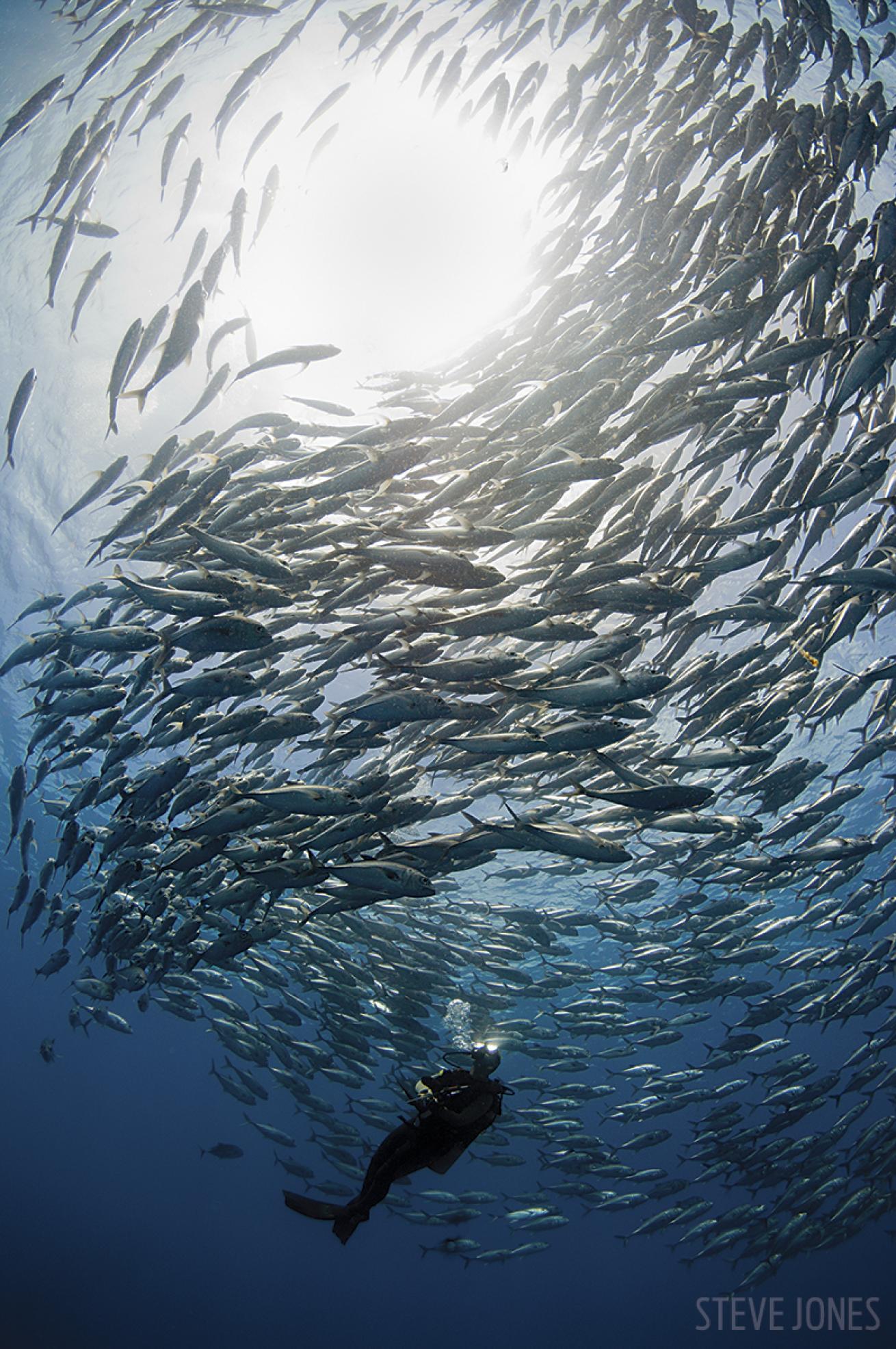
Steve JonesPerfect buoyancy doesn't seem to have much to do with solo diving—until you use up your air overexerting yourself.
Cozumel’s drifts are perfect for solo divers. Rarely do entire dive groups surface at the same moment.
Solo divers need to be practiced in all the skills that would normally befall the dive guide, including releasing the surface marker buoy to alert the boat — which surprisingly few people get right on their first attempt.
Don Labbruzzo, instructor for Deep Exposure Dive Center on Cozumel, says: “This is the hardest skill to teach people. They get tangled, and they manage to wrap it around their feet, their head, their nose.”
This skill is a must, as is switching tanks. “Solo diving, you might say, is an intro to technical training,” he says. Tec divers carry an extra mask, a redundant computer — a second everything.
In that same vein, solo divers carry redundant gear, including a spare tank, carried on the left side. In theory, switching over to the second tank doesn’t sound difficult. “But what is the first thing people do when they exert themselves?” asks Labbruzzo. “A person naturally inhales and holds their breath during any strenuous activity. Switching tanks isn’t a strenuous activity, but people mentally view it as strenuous.”
“People have a hard time doing this without ascending or descending. They get too buoyant and then they overdump. I have to challenge people to do things at one-quarter the speed they normally would.”
Says Labbruzzo, “What surprises people most is how difficult the simple tasks are.”
There’s a reason Bonaire bills itself as the island of total diving freedom. Yes, this applies to the 24/7 nature of shore diving, but also to solo diving — which is widely accepted and openly discussed on this island just north of Venezuela.
“It’s highly promoted here,” says instructor Bart Linders, who teaches the solo diver course at Buddy Dive Resort. “Bonaire is extra suited to it because the shore dives have easy entrances, and you have a lot of choice in how easy you want it to be,” says Linders.
And easy is good. The easier the site, the more relaxed and ready you are to fix problems that arise — which they will.
Says Linders, “You need to be aware of the limitless number of problems that can occur.” Broken fin strap. Lost mask.
“Anytime you have a buddy, you have another way out. But when you’re alone and knock your mask off, you need to be comfortable searching for it. In our training, I ask you to swim for a while without your mask — you need a higher comfort level with everything, basically.”
He adds: “The training helps you to stay relaxed. Because when you’re relaxed, you can find the simple solution to the problem.”
It’s about preparedness. “In the end,” says Linders, “it turns out to be the simple things that can make a really big difference.”
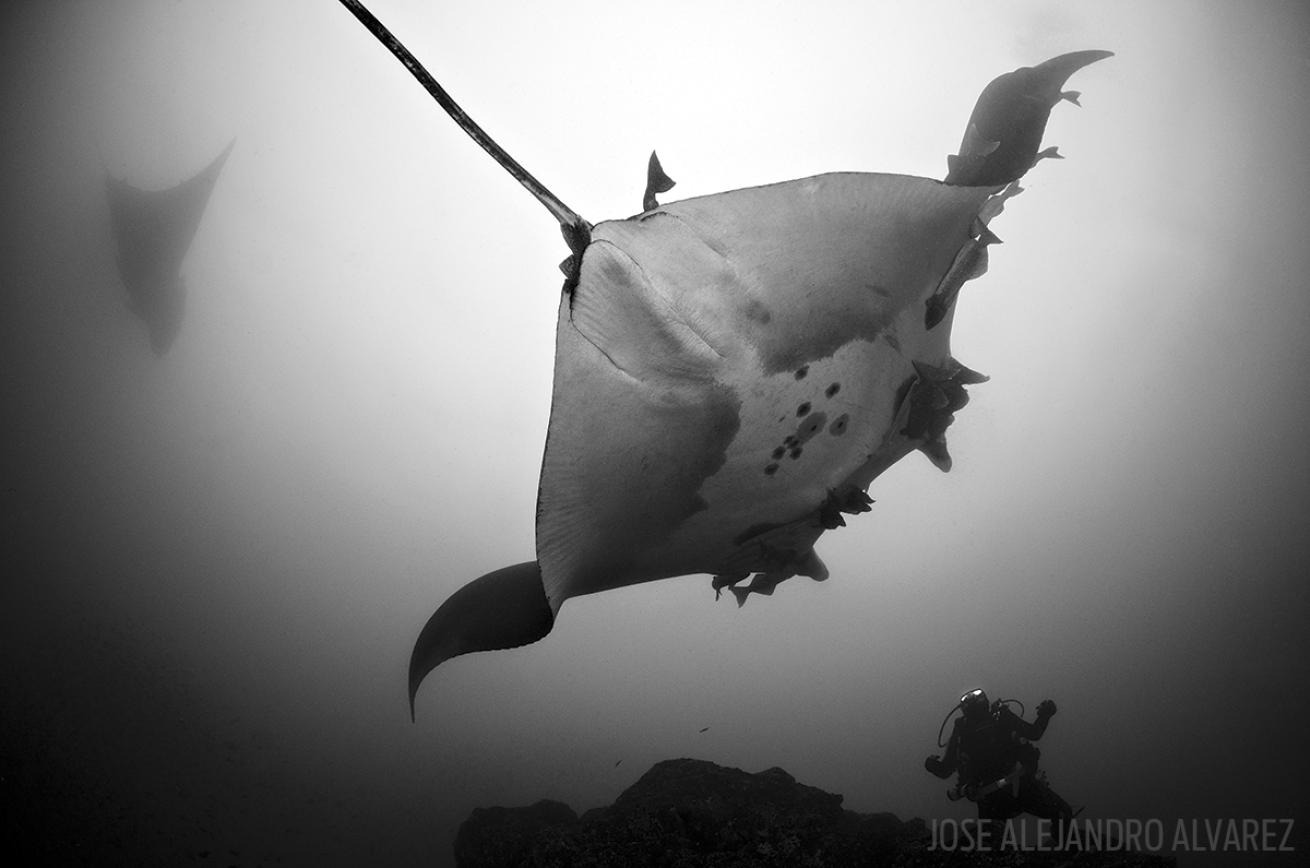
Jose Alejandro AlvarezThe quiet of solo diving can increase your chance of majestic encounters like this one at Isla de la Plata, in Ecuador.
In a way, diving is nothing more than a nature walk. And most of us wouldn’t think twice about hiking alone. Sure, the extroverts will wish they had someone to ooh and aah with at the summit. But for those who naturally prefer to decompress alone, diving solo can be a good fit. “When I dive by myself, I am really taking my time, going much slower than I would with a buddy,” says Max Monsanto, instructor at Amigos Dive Shop on Ambergis Caye, Belize. The island doesn’t have shore dives, but Amigos welcomes certified solo divers on its boats. Most of Ambergris Caye’s dives follow underwater canyons, where the terrain makes for easy navigation.
“When I’m with people diving, my mind is always on the other people — but when it’s just me, my mind stops racing and I simply look in the places where I believe beautiful creatures will hide.”
Alone, critter-finding can be a meditation.
“You use your senses so much more when solo diving, and for me, that means you enjoy it more,” says Monsanto.
And then when a school of eagle rays passes overhead — the diving equivalent of that summit view — you might have an unexpected reaction.
Says Monsanto: “When you see something, anything really, you feel like you saw it for the first time and that no one else has seen that before. You feel like you saw something amazing.”
Along Florida’s east coast, where nearly every dive is a drift dive, going solo doesn’t alter the plan much. Operators such as Horizon Divers in Key Largo are accustomed to picking up pairs of divers and solo divers when they surface.
On wreck dives, however, the protocol shifts. Because the boat is anchored to the wreck, be it the USS Spiegel Grove, USCGC Duane or USCGC Bibb, should you get blown off the vessel, you’ll have a long wait on the surface because the dive boat first has to collect all the other divers before they can fetch you, the lone target.
“Buddies can help calm each other down,” says Dan Dawson, owner of Horizon Divers. “When this happens to a solo diver, you’re talking to yourself. It’s a little more daunting.”
The training accounts for this scenario. A prepared solo diver realizes he’s been blown off the wreck and starts acting as soon as that realization hits.
“If you’re not situationally aware and paying attention to your environment,” Dawson says, “it can come back and bite you. If you wait until you’re at the surface to deploy your marker buoy, you could be a quarter-mile away from the boat,” he says, which makes it harder for crew to spot you. Instead, if you shoot the SMB while still underwater, aiming it as close as possible to the dive boat and letting it beat you to the surface, then you give yourself added peace.
You’ve just made it much easier for the crew to track that SMB until they’re able to collect you.
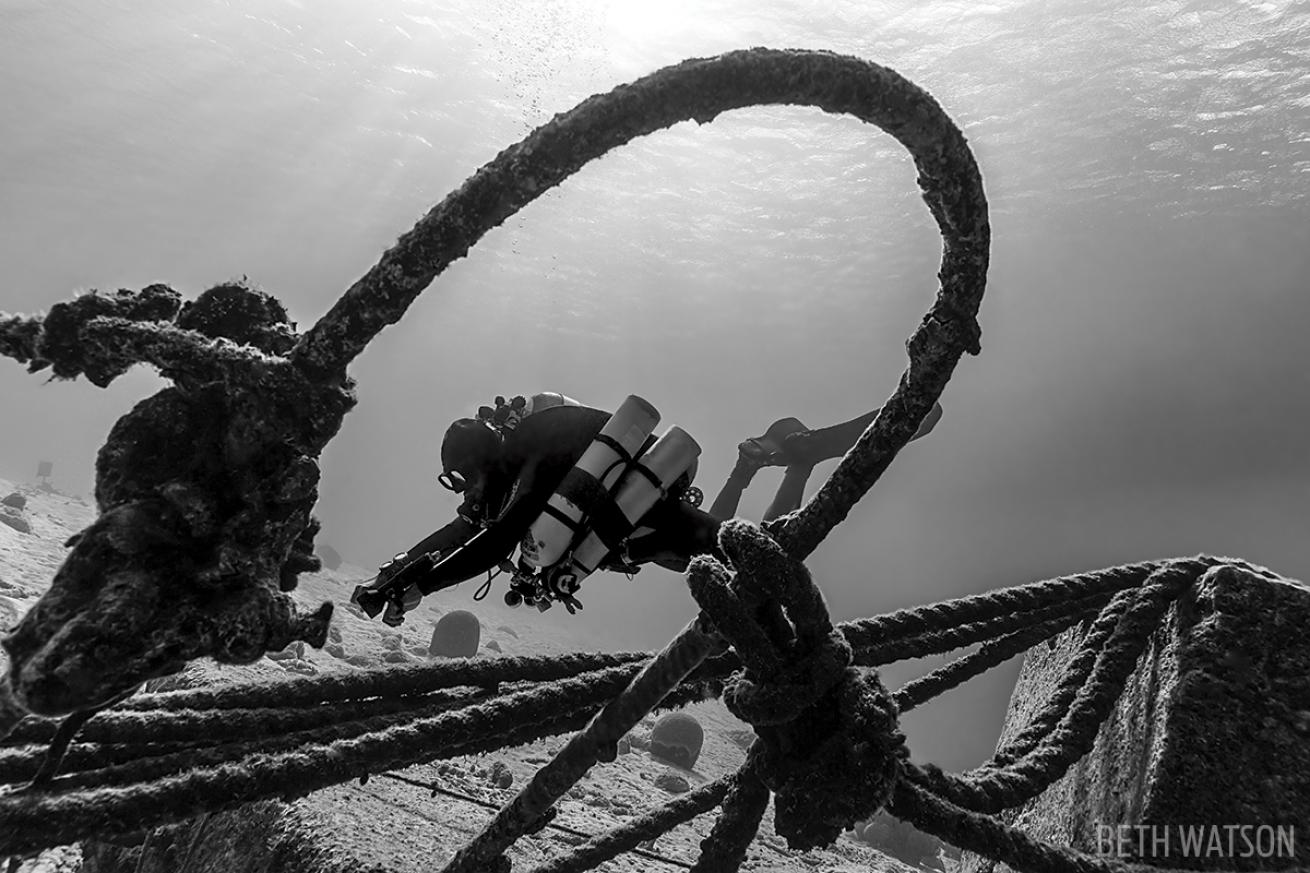
Beth WatsonBonaire is known as an attractive target for tec divers, which can be the first step toward tackling solo training.
For every diver who goes solo for relaxation, there’s the guy who finds it heightens the highs of adrenaline.
Mike Ball Dive Expeditions has been teaching solo diving since 1997, more than a decade before SDI introduced its solo diver course. Owner Mike Ball wanted to cater to experienced clientele who sought greater freedom, and because he enjoyed the pursuit.
He finds that most longtime divers, when alone, learn to rely more on instinct, just as people turn to that ability when traveling on their own.
“When you’re walking in an unfamiliar neighborhood known for its lack of safety, if you’re by yourself, you’re on your toes, you’re observing what’s ahead — and you’d likely cross the street inconspicuously if there were a gang of boys just ahead of you,” he says.
In that regard, says Ball, “solo diving heightens awareness.” And that on-edge feeling — that rush — can add to the pleasure. “One time on the Wheeler Reef,” says Ball, “I was swimming along when I suddenly noticed lots of barracuda. I slowed down and checked my camera controls. The next thing I realized, I was enclosed in this vertical barrel of barracuda.
“Not only would that likely not have happened if I had been with a buddy — but it really increased the excitement because I was by myself.”

